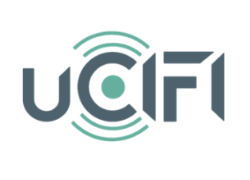uCIFI Alliance announces universal data model and interoperability for smart city IoT devices

During the Mobile World Congress, the international industry and end-customer alliance will announce the release of the uCIFI data model that will provide interoperability and interchangeability between IoT devices from various suppliers on any IoT network, starting with LoRaWAN, NB-IoT or wireless mesh.
Despite multiple IoT industry alliances and specification consortia, cities and utilities are still suffering from the lack of full interoperability when it comes to connected solutions including smart streetlights, smart waste, smart parking, smart environments, smart water or smart grids.
The main reason for this is the absence of a common way to describe and communicate IoT device’s data values (such as temperature, dimming levels, active control program, presence detection, filling levels, noise levels…).
For example, there is no agreed data format for smart streetlight dimming controllers from different LoRaWAN based solution suppliers. This is also the same for waste filling levels and parking occupancy sensors. Each solution provider has its own proprietary way to describe device’s data therefore preventing solutions to be fully interoperable at the device and network level.
Eliminate dependence on suppliers, a strategic challenge for cities
As a result, cities are left with two options: either be dependent on one single vendor during the next 10 years, or spend a fortune in integration services and vendor-specific gateways to decode the data produced by each supplier’s device. The uCIFI data model will enable smart city devices to interoperate with each other to support many smart city use cases.
Based on a very pragmatic approach, the Alliance’s technical workgroup first listed all the smart city and smart utility use cases to be supported and transformed them into a list of IoT devices and device’s data within a data model that can be adopted on any constrained IoT communication network.
A data model developed in open source to accelerate adoption by IoT device providers
These attributes were modeled using Light Weight M2M (a.k.a. LwM2M), the most common and standardised protocol for constrained IoT network, commonly use on LoRaWAN, NB-IoT and wireless mesh IoT networks. The uCIFI data model will then be released as an open source document as well as a resource on the Open Mobile Alliance (OMA) repository in order to significantly accelerate adoption among IoT device suppliers.
In addition, the Alliance worked on both device-to-cloud as well as device-to-device mechanisms to enable the uCIFI data model to support more complex, yet very common, services such as multicast grouping, sensor-to-actuator dynamic control and calendar-based control program to standardise standalone mode operations that are key to resilient smart city models.
The uCIFI data model, as well as all the Alliance’s deliverables will be open sourced by the end of 2019. In the meantime, the uCIFI data model is only accessible to members of the Alliance. Membership is open for cities and utilities (free of charge) and any industry player who is committed to creating more open and interoperable smart city and smart utility solutions.
Comment on this article below or via Twitter @IoTGN
